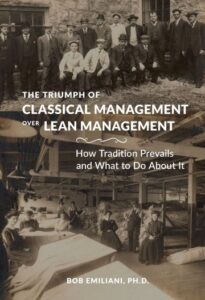Last week, on December 11th, I had the honor to spend a full day with Professor Bob Emiliani. We already had interaction before on LinkedIN and some video calls but that day we could finally meet in person!
Together with HAN Lean QRM Centre we organized an event for fellow Lean enthusiasts to be able to listen to Bob’s research discoveries about Lean Leadership.
The Issue
After more than 30 years Lean practitioners main example is still Toyota. Why is that the case? Why aren’t there many more cases of Lean transformations? Why are there just a few unicorns examples after so many years?
Many recognize this problem and many have already written about this issue. But nobody writes about this as Bob does!
The issue that many Lean practitioners face is that it is very hard to get senior management involved in the Lean transformation process. When, after several years, they evaluate why the transformation was not as successful as they hoped, causes like these are cited:
- Lack of leaders support
- Leaders not personally engaged
- Leaders behavior
- not treating employees with respect
- no good role models
- Sticking to command-and-control
- and many more…
My confusion (the penny)

I made the photo above during the meeting we organized. I wanted to remember this slide because it somehow triggered an error in my mind.
When asking Bob for more background information about this slide he referred me to his article Understanding the Institution of Leadership. In this article he makes a comparison between Deming’s System of Profound Knowledge and his description of the System of Profound Privilege:
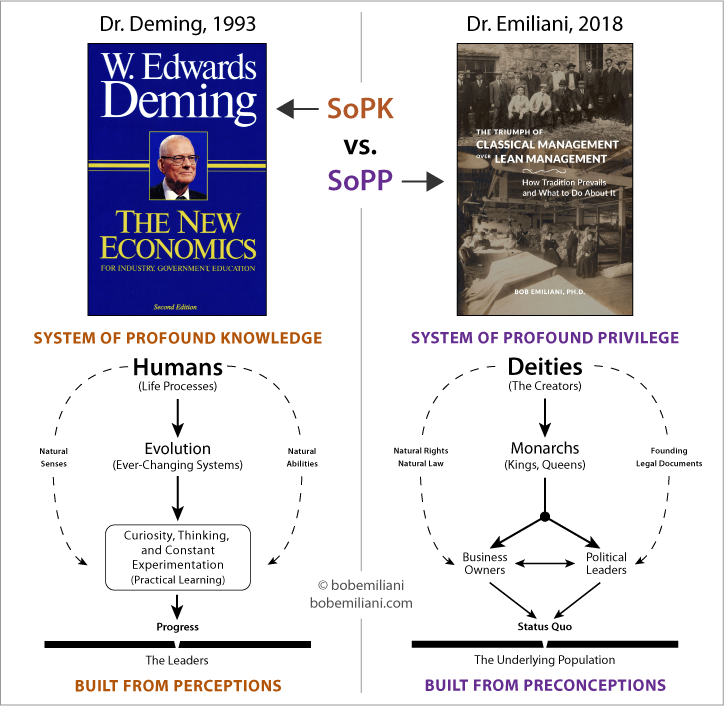
The error in my mind
Just a month ago, in my work with a client, I was triggered to pick up a book again from my personal library. It was a book about Spiral Dynamics. In the following weeks I used these insights with my client, but that is a whole story in itself.
Point is that I had been learning and using Spiral Dynamics the weeks preceding the moment I saw this image. And when I saw this image I was thinking: “Something seems to be wrong here…”
What is Spiral Dynamics?
Spiral Dynamics is both a theory about how an individual develops as it is a theory about how organisations and their associated culture develops. The theory was introduced in the 1996 book Spiral Dynamics by Don Beck and Chris Cowan. The book was based on the theory of professor Clare W. Graves.
As you know, all theories are wrong, but this one seems to be very useful.
The dropping of the penny
I started to think about Bob’s slide in the context of Spiral Dynamics. What happened during the next days silenced me. So many pieces from the past 20+ years started to fall in place. I now have a framework that I started calling:
Culture Dynamics for Lean ©
Now I have to write about it and below you see the first piece of it!
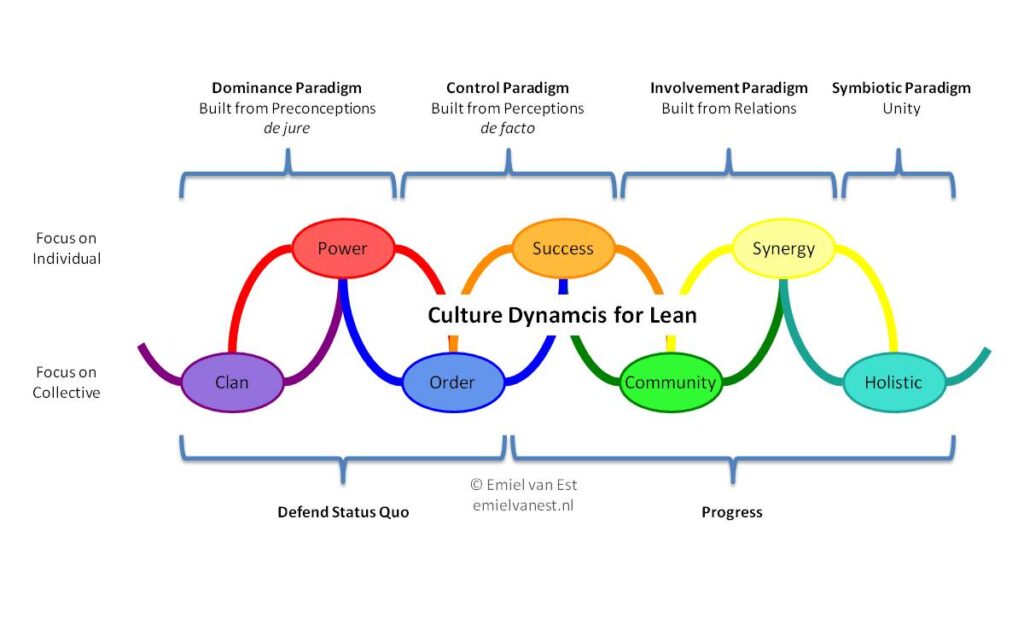
The spiral
Central in the image you see the spiral from Spiral Dynamics. It represents the progression from a clan culture to a holistic culture. During this progression the culture alternates between a focus on the individual and a focus on the collective.
The paradigms
Above the spiral you see four paradigms. Lets examine the first two paradigms in relation to Bob’s image.
Both the clan culture and the power culture follow the dominance paradigm. I think this paradigm matches Bob’s concept of de jure being built from preconceptions.
de jure:
The thinking and practices based on rules, customs, habits, sentiments, prejudices, policies, or laws; spiritual, belief-based, magical; and gut instinct.
Both the order culture and the success culture follow the control paradigm. I think this paradigm matches Bob’s concept of de facto being built from perceptions.
de facto:
The thinking and practices based on that which exist in reality: facts, cause-and-effect, logical, objective, dispassionate, unbiased; scientific method; the material world.
Progressive versus Defensive Cultures
There are three cultures that tend to defend the status quo: the clan culture, the power culture and the order culture.
The other four cultures are very much progress oriented.
The difference
So what is the error that got triggered in my mind by Bob’s image? Now that I have my image of Culture Dynamics for Lean I can show it to you!
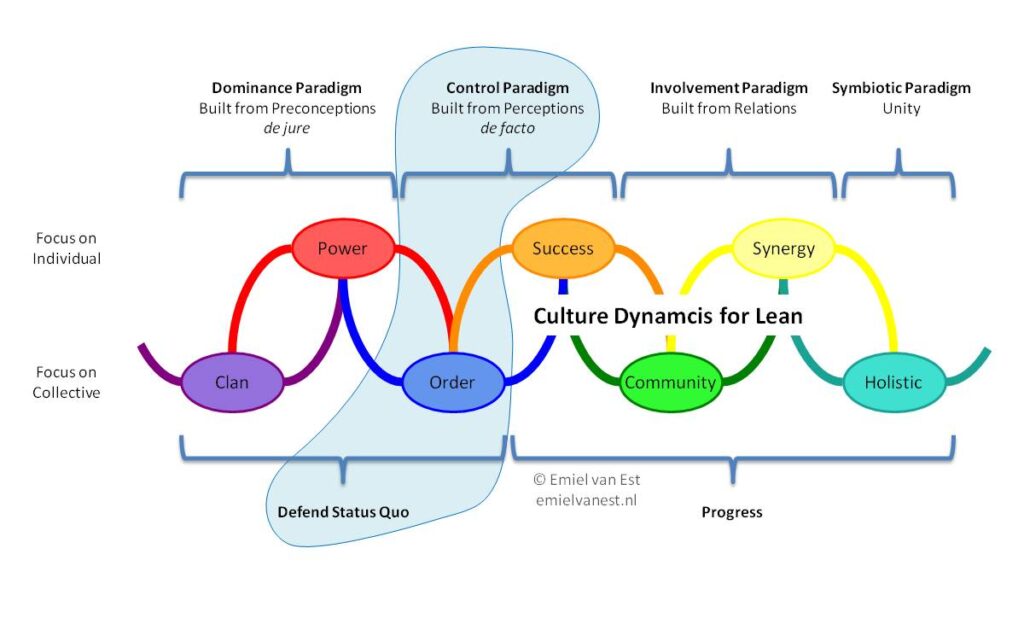
The difference is in the order culture. The order culture is both de facto AND defending the status quo.
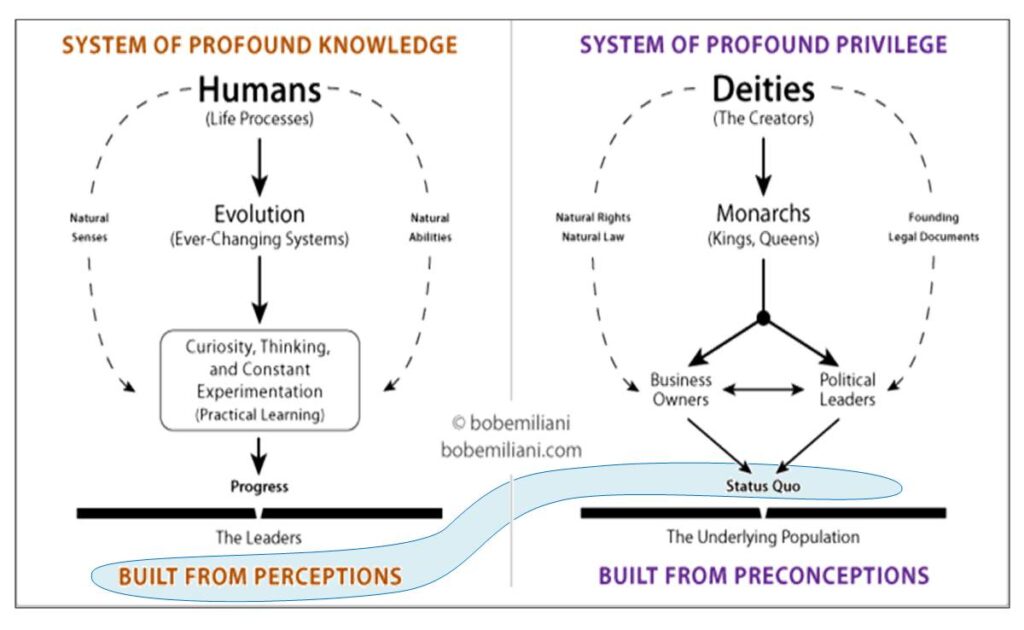
I think you can say that the order culture facilitates the transition from de jure, built from preconceptions to a more progress oriented culture. The order culture is still focused on keeping a status quo but it adopts the control paradigm over the dominance paradigm. Or, using Bob’s terms, the order culture adopts de facto over de jure. That transition may very well be the stepping stone for more progress.
The relevance
At this point, the most relevant learning for me is this question:
If we refer to a Lean Culture,
which culture do we mean?
What if there is no such thing as a Lean Culture…?
Stay tuned, to be continued!
